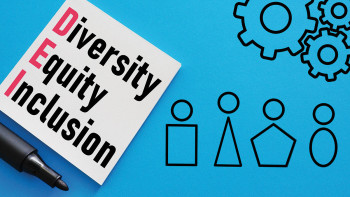
How Nepal can create a new future via education and IT
As we herald in the New Year, we declare personal and professional resolutions for the coming months. But resolutions are easier said than done. No wonder we end up repenting what we have decided so solemnly over the years.
Apparently, governments, politicians, law makers, bureaucrats, administrators also work out objectives for the country’s socio-economic progress. Like us, the biggies too often fail to achieve their highly publicised goals.
Is it because resolution-making has become a ritual for the commoner and a tool of deceit for the powers that be? Or is it because we pay little attention to applicability, efficacy and viability of commitments?
We have seen this happening in Nepal and numerous other countries which lack financial and intellectual capital. Yet, we remain fascinated with capital-intensive infrastructure projects for which funds and expertise are sought from external agencies. We continue to be rated as a lower-income country by the World Bank despite some progressive measures during the last few years. In fact, the country could have done better had it not been plagued by debilitating political instability ever since it embraced democracy in 2008 after a bloody civil war. The last 16 years are infamous for political squabbling and deception rather than good governance.
Though it is not a silver bullet for all challenges Nepal faces, top priority to quality education can serve as the fastest and most economical change agent. The massive advantage is the country’s small population of around 30 million, unlike most of its neighbours.
In fact, Nepal’s miserable economy has remained afloat because of remittances from over four million Nepali youth engaged in low-level, semi-skilled, menial and hazardous jobs primarily in West Asian countries. This inflow accounts for over 30% of Nepal’s gross domestic product. There is no authentic data on earnings of large portions of Nepali citizens working in open-border neighbour India. The absence of a considerable number of able-bodied males has compelled Nepal to switch to a net importer for agricultural products and other food items since the 1990s. With such a bleak backdrop, surveys predict that low-income Nepal may become a lower middle-income country by 2030, with ifs and buts continuing to dog the progress.
So, why don’t we abandon the routine path and opt for education, training and skill-development in a big way for Nepal’s deliverance.
In a well-researched piece in Brokenchalk.org, Ximeng Zhang aptly states: “…To achieve its aim of achieving middle-income status by 2030, education is of paramount importance. According to data collected by the World Bank, Nepal has come a long way to raise its adult literacy rate from 21% in 1981 to 71% in 2021 and its youth literacy rate from 30% in 1981 to 94% in 2021. However, despite the promising increase, educational challenges persist in Nepal, hindering its national progress in providing accessible and quality education to its citizens… Such barriers and challenges include deep-rooted discrimination based on gender and caste, insufficient accommodation for people with different mother tongues, poverty-related difficulties, low quality of education, a lack of basic infrastructure for girls and children with disabilities in school, as well as a lack of a school monitoring and accountability system.” But the literacy rate has risen to 73% by 2023.
Though it is not a silver bullet for all challenges Nepal faces, top priority to quality education can serve as the fastest and most economical change agent. The massive advantage is the country’s small population of around 30 million, unlike most of its neighbours.
As per Nepal’s education challenges, Nobel laureate Abhijit Banerjee’s extensive research in development economics provides valuable insights. Banerjee emphasises that addressing the root causes of educational disparities is essential for sustainable progress. Nepal’s diverse topography, economic variations and cultural intricacies necessitate a nuanced approach. A World Bank report underscores the need for targeted interventions in teacher training, infrastructure development and curriculum innovation in sync with the requirement of current job market and entrepreneurship.
Learning from the experiences of countries that have successfully navigated similar challenges is crucial. Bangladesh’s strides in female education, for instance, offer practical insights. South Korea’s educational reform stands out as an exemplary model. It successfully prioritised teacher development, curricula revamp to foster critical thinking, and embracing technology in classrooms. Finland’s education system, renowned for its excellence, places emphasis on equality and student well-being. The holistic approach went beyond mere academic achievements.
Positioning Nepal as a destination for IT and technology outsourcing through labour arbitrage can be a game-changer. The nation can attract foreign investments, creating a sustainable economic ecosystem by leveraging skilled workforce. Countries like Singapore and Luxembourg have shown that small size economies are no deterrent to global recognition. However, the nations can be a catalyst for innovation and economic growth.
Estonia, with a population of only 1.3 million, strategically invested in digital education, transforming itself into a hub for tech innovation. Blessed with an untapped potential, Nepal can become an island of expertise through skill development, leading to reduced dependence on remittances and a surge in international prestige.
With its breath-taking landscapes and warm hospitality, Nepal can also emerge as a preferred destination for mountaineering and hospitality training. Highlighting sustainable tourism, Bhutan exemplifies how a small, landlocked nation can turn its natural assets into a source of economic strength.
New Year Resolution: Let IT-propelled education drive Nepal to unattained heights.






